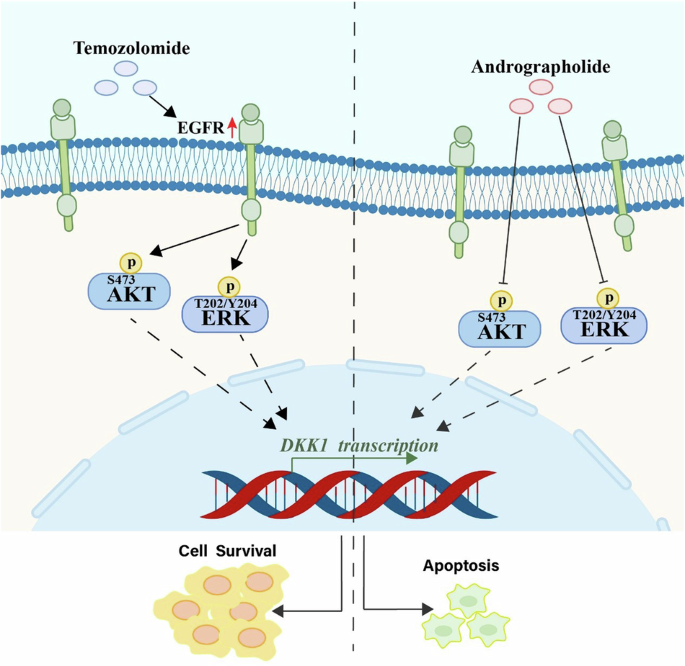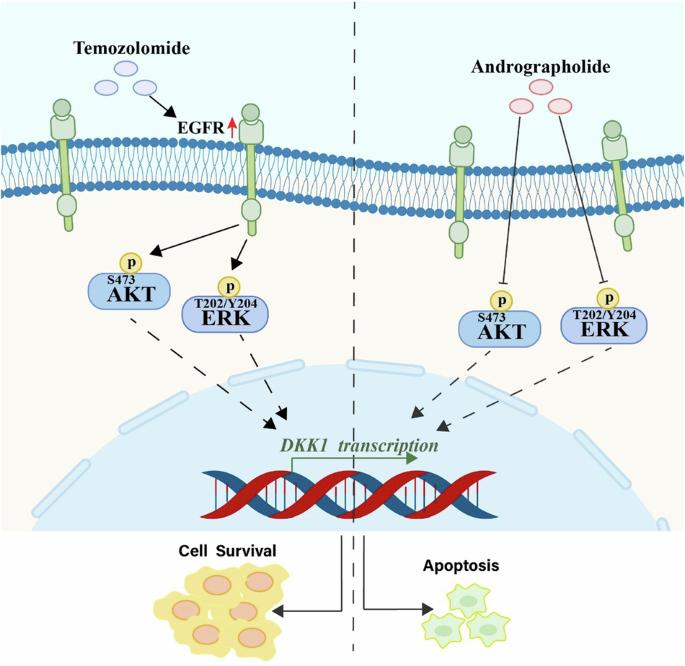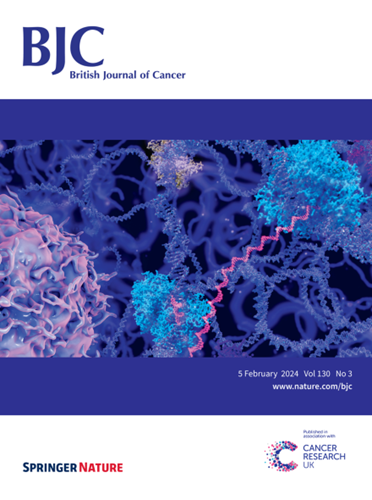Andrographolide sensitizes glioma to temozolomide by inhibiting DKK1 expression
IF 6.4
1区 医学
Q1 ONCOLOGY
引用次数: 0
Abstract
Temozolomide (TMZ) is the first-line chemotherapeutic drug for gliomas treatment. However, the clinical efficacy of TMZ in glioma patients was very limited. Therefore, it is urgently needed to discover a novel approach to increase the sensitivity of glioma cells to TMZ. Western blot, immunohistochemical staining, and qRT-PCR assays were used to explore the mechanisms underlying TMZ promoting DKK1 expression and andrographolide (AND) inhibiting DKK1 expression. HPLC was used to detect the ability of andrographolide (AND) to penetrate the blood-brain barrier. MTT assay, bioluminescence images, magnetic resonance imaging (MRI) and H&E staining were employed to measure the proliferative activity of glioma cells and the growth of intracranial tumors. TMZ can promote DKK1 expression in glioma cells and brain tumors of an orthotopic model of glioma. DKK1 could promote glioma cell proliferation and tumor growth in an orthotopic model of glioma. Mechanistically, TMZ increased EGFR expression and subsequently induced the activation of its downstream MEK-ERK and PI3K-Akt pathways, thereby promoting DKK1 expression in glioma cells. Andrographolide inhibited TMZ-induced DKK1 expression through inactivating MEK-ERK and PI3K-Akt pathways. Andrographolide can cross the blood-brain barrier, the combination of TMZ and andrographolide not only improved the anti-tumor effects of TMZ but also showed a survival benefit in an orthotopic model of glioma. Andrographolide can enhance anti-tumor activity of TMZ against glioma by inhibiting DKK1 expression.


穿心莲内酯通过抑制DKK1的表达使胶质瘤对替莫唑胺敏感
背景替莫唑胺(TMZ)是治疗胶质瘤的一线化疗药物。然而,TMZ 对胶质瘤患者的临床疗效非常有限。方法采用Western印迹、免疫组化染色和qRT-PCR检测等方法探讨TMZ促进DKK1表达和穿心莲内酯(AND)抑制DKK1表达的机制。采用高效液相色谱法检测穿心莲内酯(AND)穿透血脑屏障的能力。采用 MTT 试验、生物发光图像、磁共振成像(MRI)和 H&E 染色法检测胶质瘤细胞的增殖活性和颅内肿瘤的生长情况。DKK1可促进胶质瘤正位模型中胶质瘤细胞的增殖和肿瘤的生长。从机理上讲,TMZ会增加表皮生长因子受体的表达,进而诱导其下游MEK-ERK和PI3K-Akt通路的激活,从而促进DKK1在胶质瘤细胞中的表达。穿心莲内酯通过使 MEK-ERK 和 PI3K-Akt 通路失活,抑制了 TMZ 诱导的 DKK1 表达。穿心莲内酯可穿过血脑屏障,TMZ 和穿心莲内酯的联合应用不仅提高了 TMZ 的抗肿瘤效果,而且在胶质瘤正位模型中显示出生存获益。
本文章由计算机程序翻译,如有差异,请以英文原文为准。
求助全文
约1分钟内获得全文
求助全文
来源期刊

British Journal of Cancer
医学-肿瘤学
CiteScore
15.10
自引率
1.10%
发文量
383
审稿时长
6 months
期刊介绍:
The British Journal of Cancer is one of the most-cited general cancer journals, publishing significant advances in translational and clinical cancer research.It also publishes high-quality reviews and thought-provoking comment on all aspects of cancer prevention,diagnosis and treatment.
 求助内容:
求助内容: 应助结果提醒方式:
应助结果提醒方式:


